“After The Song of Everlasting Sorrow: Contemporary Chinese Literature and Me,” lecture by Wang Anyi at Harvard University, February 29, 2016In her lecture titled “After The Song of Everlasting Sorrow: Contemporary Chinese Literature and Me” at Harvard University on February 29, 2016, the celebrated writer Wang Anyi shared with a full auditorium of over 200 listeners a novelist’s constant search for good stories in both real life and imagination. Wang, who consciously alternated between stories of various lengths in her writing career, discussed the complex demands she faced in seeking to bring out the best of her sources in a well-structured narrative. She also shared a few anecdotes, ranging from her work experience at Shanghai Women’s Federation in the 1980s to her last visit to Cambridge, in which unexpected encounters turned out to generate important inspirations for her stories. In her talk, Wang stressed the significance of bringing together the concrete and the abstract in the art of storytelling as she looked for human stories in fictive settings. Her talk was followed by a live Q & A. The audience raised a variety of questions that touched on the impact of Eileen Chang on her writing, contemporary web fictions, the translation of Chinese literature, and Chinese literature in a global context. “Ontologies, Ritual Practices, and Early Chinese Religion in Comparative Perspective,” Early China Seminar Special Workshop Series 2015-16, co-chaired by Jue Guo and Roderick Campbell, Second and Third Meetings at Columbia University, December 18, 2005 and March 19, 2016Second Meeting Powerful Practices and their Ontological Bases: “Ritual,” “Sacrifice,” and “Cult” in Ancient China The second meeting moved beyond the category of “ancient religion” and the problem of ontological perspective to the more specific subtopic of powerful practices. Our presenters were Michael Puett of Harvard University and Beate Pongratz-Leisten of the Institute for the Study of the Ancient World. Professor Puett spoke on the meaning of ritual in Early China as a practice aimed at producing, temporarily, perfect relations between father and son, ruler and minister, Heaven and Humanity, etc. Implicit in this practice was the idea that these relations were not and could never be perfect. For her part, professor Pongratz-Leisten spoke on the topic of Ancient Near Eastern ritual and the crucial importance of religion to Ancient Near Eastern politics and society. During the roundtable discussion, Puett was questioned concerning variability and historical change in ritual practices in Ancient China; for instance, what sort of relationship was Shang human sacrifice supposed to embody? Others questioned whether Pongratz-Leisten was importing the Enlightenment category of religion into a time and place where a radically different ontology prevailed. During the debate, which continued over dinner, the participants agreed that the term “powerful practices” was a useful term for describing culturally specific practices that could cover the historical and semantic range of such things as li in the Chinese context. Third Meeting Divination: Ontologies of Ancient Futures For the third installment of the series, Ethan Harkness and Marc Van Der Mieroop gave presentations. Ethan presented some of his work concerning the late Warring States and Qin day books that have been recently excavated in China. His presentation was relatively detailed and technical but presented an example of a kind of limit case for divination. Is a manual listing good and bad days and proscribing their mitigation actually divination at all? In Marc’s presentation, he gave a less formal but also interesting talk on Mesopotamian divination while engaging with Martin Haalbrad’s recent book on truth and divination. The problematic for Haalbrad (and Van Der Mieroop) was the basic assumption in divination concerning the absolute truth of the oracle. Debate then followed concerning whether in fact this was true in Early China, with the idea that a different ontology of truth might give rise to another kind of divination. If a divinatory outcome can be changed (a basic premise of most Chinese divinatory practices), if divination is just one aspect of a suite of ritual interventions the goal of which is to secure an auspicious outcome, where does the notion of absolute truth implicit in divination find space? Again the debate continued during dinner afterwards and it was agreed that the conversation had raised basic questions not previously considered by the participants. “Imagining the Trans-indigenous Pacific: Bill Reid, Robert Sullivan, and Syaman Rapongan,” lecture by Hsinya Huang at Harvard University, April 11, 2016In her lecture, “Imagining the Trans-indigenous Pacific: Bill Reid, Robert Sullivan, and Syaman Rapongan,” held at Harvard University on April 11, 2016, Professor Hsinya Huang employed “the Pacific” as a contact zone to examine the shifting relationship between the land and the sea through literature. She focused on the works of two writers, Aotearoa (New Zealand) poet Robert Sullivan’s Star Waka and Pangso no Tau writer Syaman Rapongan’s Eyes of the Sky. In particular, she highlighted the powerful metaphor of the canoe navigating across the “pathway” of the sea. As non-human beings such as whales and flying fish and artistic objects such as canoes literally travel across the Pacific, they help foster multiple kinds of connections and commonalities. The lecture demonstrated how indigenous cultural productions from the Pacific re-nativize islands into a counter-continental site, paying special attention to Syaman Rapongan’s reinvention of the “enemy’s language.” Professor Huang offered some of her thoughts on Syaman Rapongan as a Sinophone writer and the methodological significance of indigenous Taiwan. Around 15 people attended the talk, including visiting scholars and graduate students. The issue of situating Syaman Rapongan in the Sinophone contact zone generated much discussion after Professor Huang’s talk. Cultural Revolution and Cinema International Symposium at Harvard University, April 16, 2016Upon the fiftieth anniversary of the Cultural Revolution, the Cultural Revolution and Cinema International Symposium, held at Harvard University on April 16, 2016, considered the cinematic production and reception, practices and legacies of that tumultuous decade. The mass criticism of several “poisonous weed” films in the mid-1960s helped to launch the Cultural Revolution, and the 1970s saw the expansion of the film exhibition network and radical growth of film audiences. If film was the mass medium that reached the most number of people, were the Chinese “brainwashed” by what they saw, or were there alternative modes of reception? With the censorship and rejection of nearly all films made before 1966, what special film aesthetics and genres emerged in the Cultural Revolution? How did cinema interact with other propaganda media? What was the political role of film production, exhibition, and criticism? What has been the afterlife of Cultural Revolution cinema, and how are the decade’s films and everyday movie-going remembered today? These questions were addressed in three panels: Revolution through Cinema (with Richard Pena, Yomi Braester, and Ying Qian); Revolutionary Aesthetics (with Jason McGrath and Laikwan Pang); and Cinematic Memories (with Laurence Coderre, Rudolf Wagner, Chris Berry, and Jie Li)—plus a roundtable discussion (with Carma Hinton, Cathy Yeh, Chris Berry, Yomi Braester, and Eugene Wang). About 80 people attended the symposium, which was also presented in conjunction with a program on Xie Jin at the Harvard Film Archive. Chinese and Middle Eastern Crossings Workshop at the University of South Carolina, April 16, 2016On April 16, 2016, the Center for Asian Studies and the Walker Institute for International and Area Studies at the University of South Carolina hosted a one-day workshop on “Chinese and Middle Eastern Crossings.” The workshop was organized by Michael Hill. Scholars from North America, Japan, Singapore, and the UK delivered eight papers that examined connections between China, Japan, the Ottoman Empire, and other Middle Eastern states in the nineteenth and twentieth centuries. Paper topics included “Engaging the Qur’an in China,” “Ottoman Muslims in China in the Early Twentieth Century,” and “Reading the 1,001 Nights in Early Twentieth-Century China.” This event was made possible by the generous support of CCK-IUC for a three-year series of workshops on the theme “China Beyond East and West: New Directions in Comparison and Cross-Regional Approaches.” Subsequent workshops will continue to nurture scholarship and explore new ways to think outside of the “East/West” divide and other binaries that structure the China studies field and separate area studies fields from one another. Religion in Twentieth-Century and Contemporary China Lecture Series 2015-16, George Washington UniversitySecond Talk “The Sovereignty of the Dead and the Disorder of War in Twentieth-Century China and Taiwan,” lecture by Rebecca Nedostup, December 3, 2015 On December 3, 2015, Rebecca Nedostup, Associate Professor of History at Brown University, delivered the second talk of the 2015-16 lecture series on “Religion in Twentieth-Century and Contemporary China” at the Sigur Center of Asian Studies at George Washington University. Professor Nedostup’s talk was entitled: “The Sovereignty of the Dead and the Disorder of War in Twentieth Century China and Taiwan.” Her talk focused on the important role of lineages and native-place associations in repatriating the wartime dead across long distances, in finding ritual solutions for the dead bodies of refugees, and in rebuilding communities at the end of the Sino-Japanese war (1937-1945). Using archival and periodical materials as well as oral interviews, she showed that during a time when the central government floundered to meet its political promises, and the conclusion of one conflict hastily gave way to the prolonged mobilization of the Chinese Civil War and Cold War, socio-religious organizations and individuals worked to re-establish moral and cosmic order by emplacing the displaced dead. Third Talk “The Return of Confucianism in Contemporary China,” lecture by Anna Sun, April 15, 2016 On April 15, 2016, Dr. Anna Sun delivered the third talk of the 2015-16 lecture series on “Religion in Twentieth-Century and Contemporary China” at the Sigur Center of Asian Studies at George Washington University. Dr. Sun is Associate Professor of Sociology and Asian Studies at Kenyon College. The title of her talk was “The Return of Confucianism in Contemporary China.” Dr. Sun pointed out that the revival of Confucianism in contemporary China has many dimensions, among which the political, the educational, the ritual, and the ethical are the most prominent. She focused on the last two, the ritual and the ethical revival of Confucianism in everyday practice. Her talk was based on extensive field research in Confucius temples as well as on interviews about ritual life in urban China. The conclusions drawn from this research bear witness to the resilience of Confucianism as a structuring power in the religious, social, and ethical imagination of Chinese society today. Fourth Talk “Religion and Revolution in China,” lecture by Professor Elizabeth Perry, April 18, 2016 On April 18, 2016, Dr. Elizabeth Perry visited George Washington University’s Sigur Center of Asian Studies and delivered the final lecture for the 2015-16 lecture series on “Religion in Twentieth-Century and Contemporary China.” Dr. Perry is Henry Rosovsky Professor of Government and Director of the Harvard-Yenching Institute at Harvard University. In her lecture, entitled “Religion and Revolution in China,” Professor Perry first traced historical connections between religion and rebellion in pre-Communist times. She then demonstrated how early Communist organizers deployed quasi-religious resources to mobilize workers in the famous Anyuan’s coal mine strike of 1922. Lastly, Professor Perry examined the use of religious symbols and rituals in the making of the cult of Mao and in the political mobilization of contemporary China. She concluded by pointing out the crucial role of religion in the Chinese revolutionary tradition and in facilitating our understanding of contemporary China. “Memory in Medieval China,” 11th Annual Meeting of the Chinese Medieval Studies Workshop, Rutgers University, April 29-30, 2016The 11th Annual Meeting of the Chinese Medieval Studies Workshop was held at Rutgers University on April 29-30, 2016. This workshop, started by Wendy Swartz in 2003, is a major academic forum for scholars from across the United States working on medieval Chinese literature, history, religion, and visual culture. The theme of this year’s workshop was Memory in Medieval China. This increasingly major area of research was discussed from a number of vantage points: cultural memory, textual memory, trauma and memory, funerary commemorative writings, and memorization. The discussion was highly productive. The essays produced for the workshop this year will be collected and included into a volume on Memory Studies and Medieval Chinese Texts, edited by Wendy Swartz and Robert Campany. This year’s workshop was by far the most successful meeting thus far. The Workshop saw the largest graduate student attendance ever, 31 students, which almost tripled the number of faculty participants. Over the years, graduate students from Columbia, Harvard, Yale, Princeton, The University of Pennsylvania, and Rutgers have attended the meetings. In addition, several visiting scholars from China and members of the Institute for Advanced Study (Princeton) also attended this year’s meeting. This workshop hopes to build on the momentum it has gathered over the past decade and continue to be a major forum for scholarly exchange. New Media in China and Taiwan Workshop, held at the University of Washington in Seattle, May 7, 2016The workshop, the 2016 iteration of the multi-year seminar on Sinophone cinema and visual culture sponsored by the CCK-IUC, was dedicated this year to new media, in the sense of digital culture that arises from cinema culture and expands it. As in the previous year, the format called for 30-minute presentations on pre-circulated essays, followed by a 30-minute discussion for each essay. At the end, the workshop convened for a one-hour roundtable. This format allows for in-depth discussion of works in progress. The workshop featured the following presenters and discussants:
Yomi Braester, University of Washington Presentation: The City as Digitized Scroll Justin Jesty, University of Washington Jinying Li, University of Pittsburg Presentation: Walled Media and Mediating Walls Xiao Liu, McGill University (Canada) Presentation: Politics of the Interface: AI development in 1980s China Joshua Neves, Concordia University (Canada) Presentation: Videation: Technological Intimacy and the Politics of Global Connection Shuen-shing Lee, National Chung Hsing University (Taiwan) Presentation: New Media for New Subjectivity: The Cyborg Imagination in Wen-Cheng Lee’s Taiwan-Flavored Art James Tweedie, University of Washington In addition, the workshop was attended by about a dozen faculty, graduate students, and visiting scholars at the University of Washington. The workshop took place at the Simpson Center for the Humanities, which co-sponsored the event as part of its long-term support of the CCK multi-year seminar. |
Archives
September 2020
Categories |

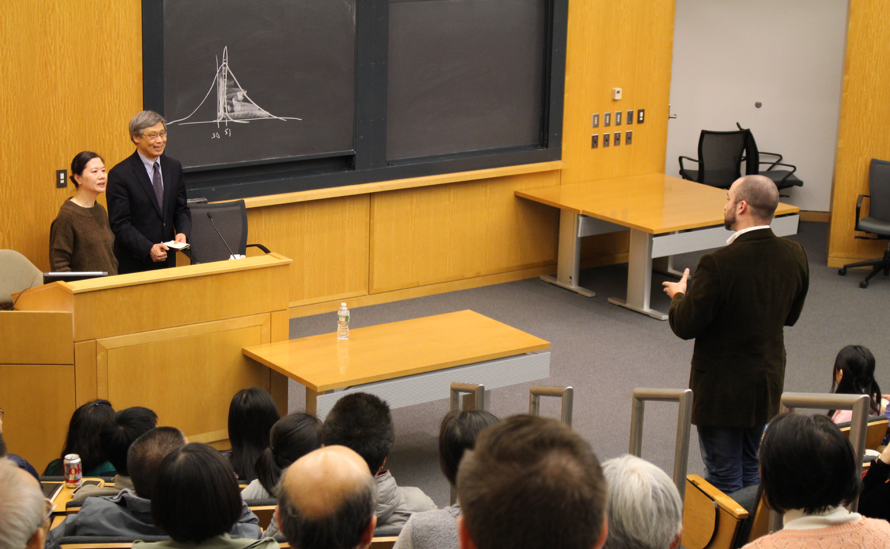
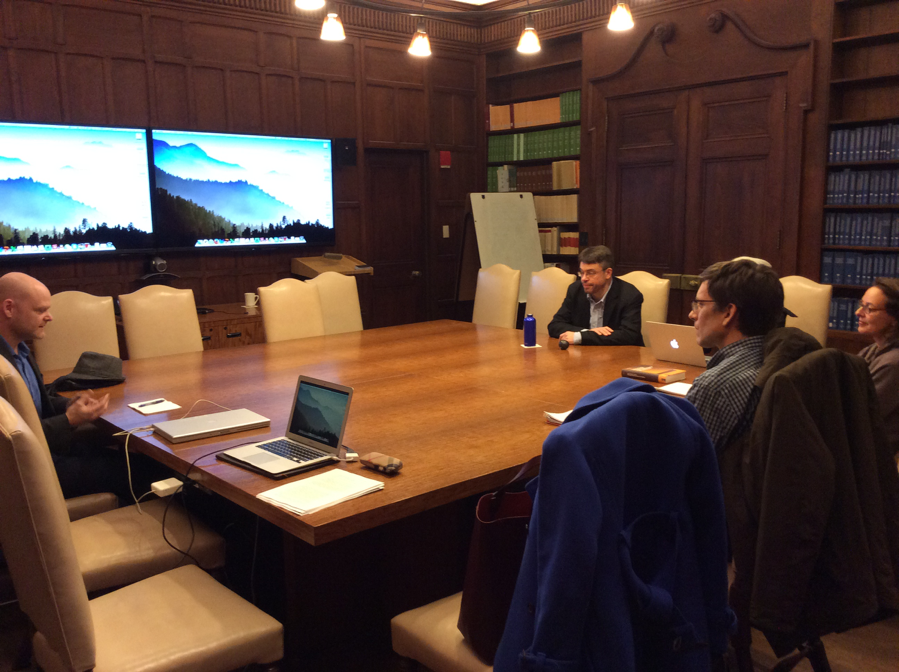
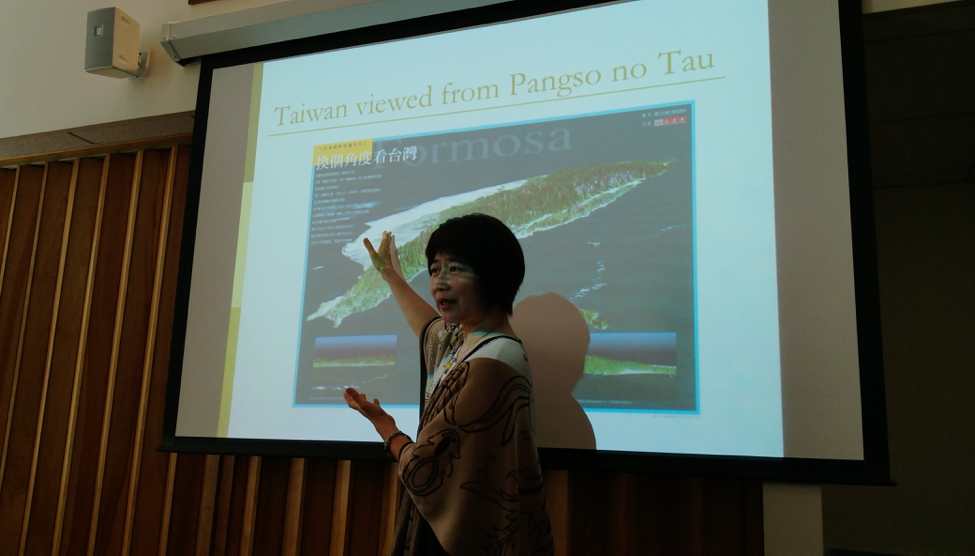
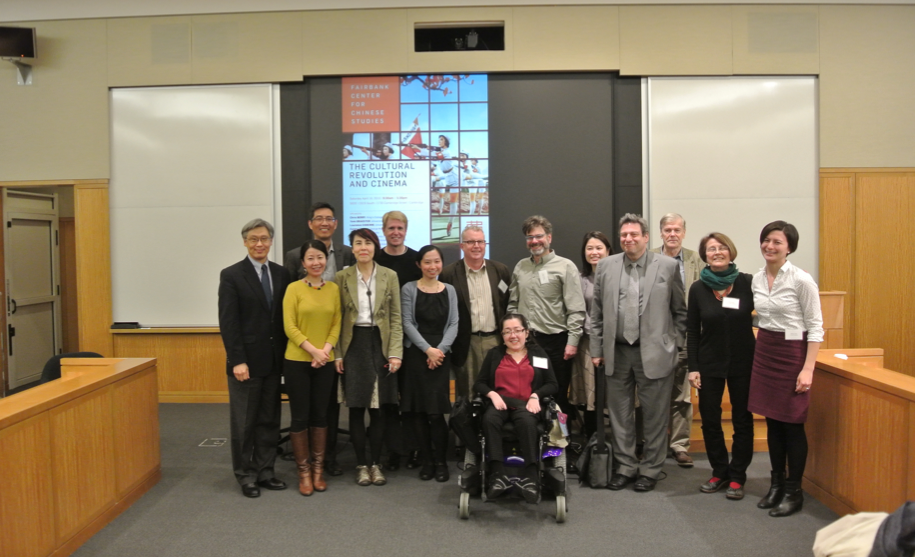
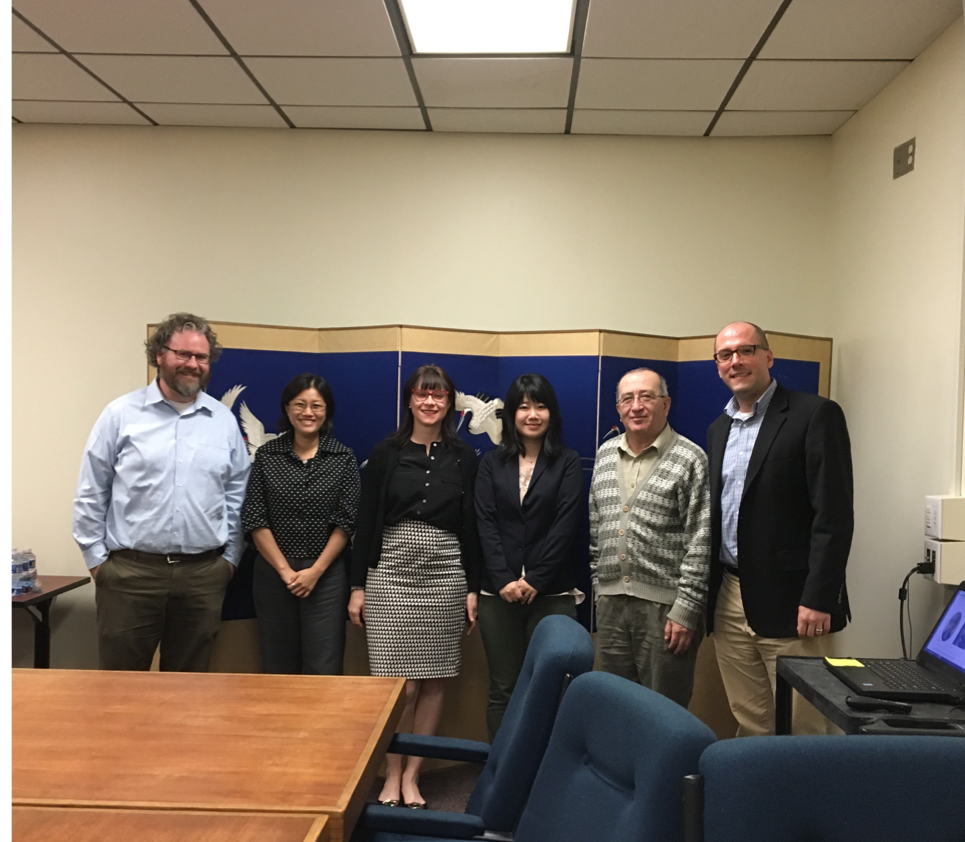
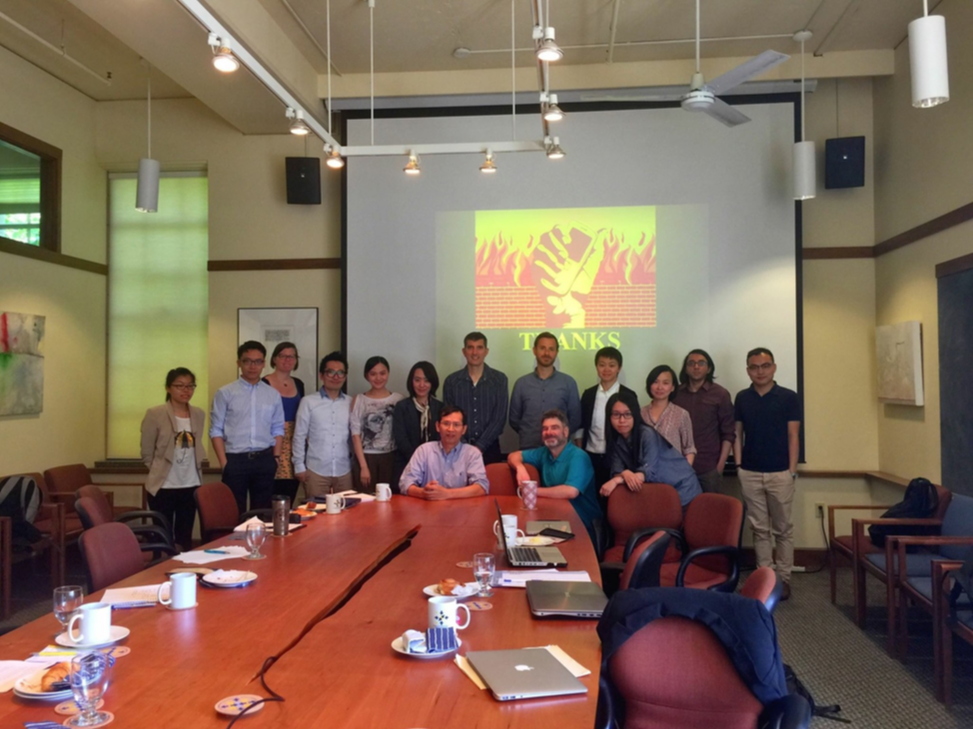
 RSS Feed
RSS Feed